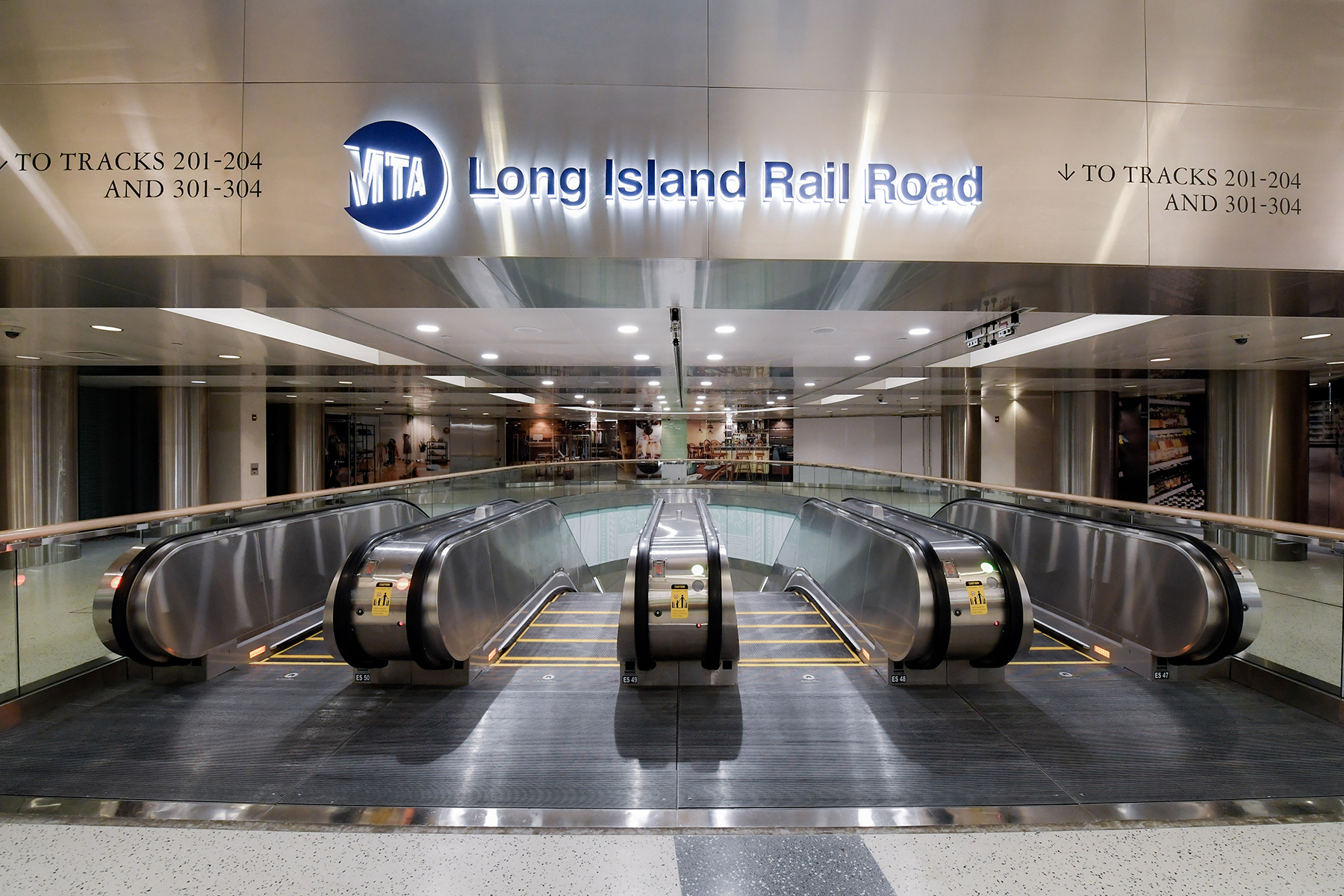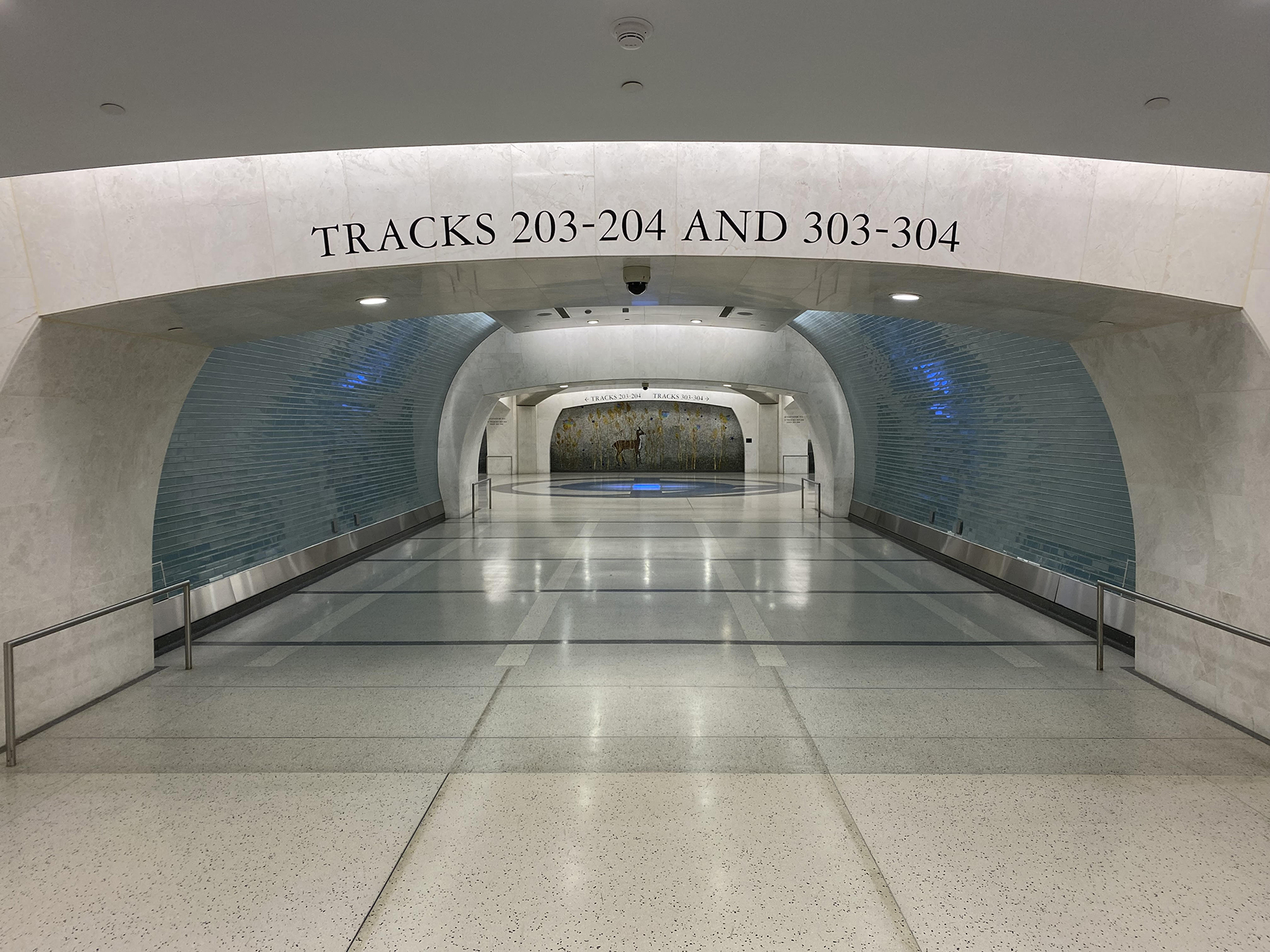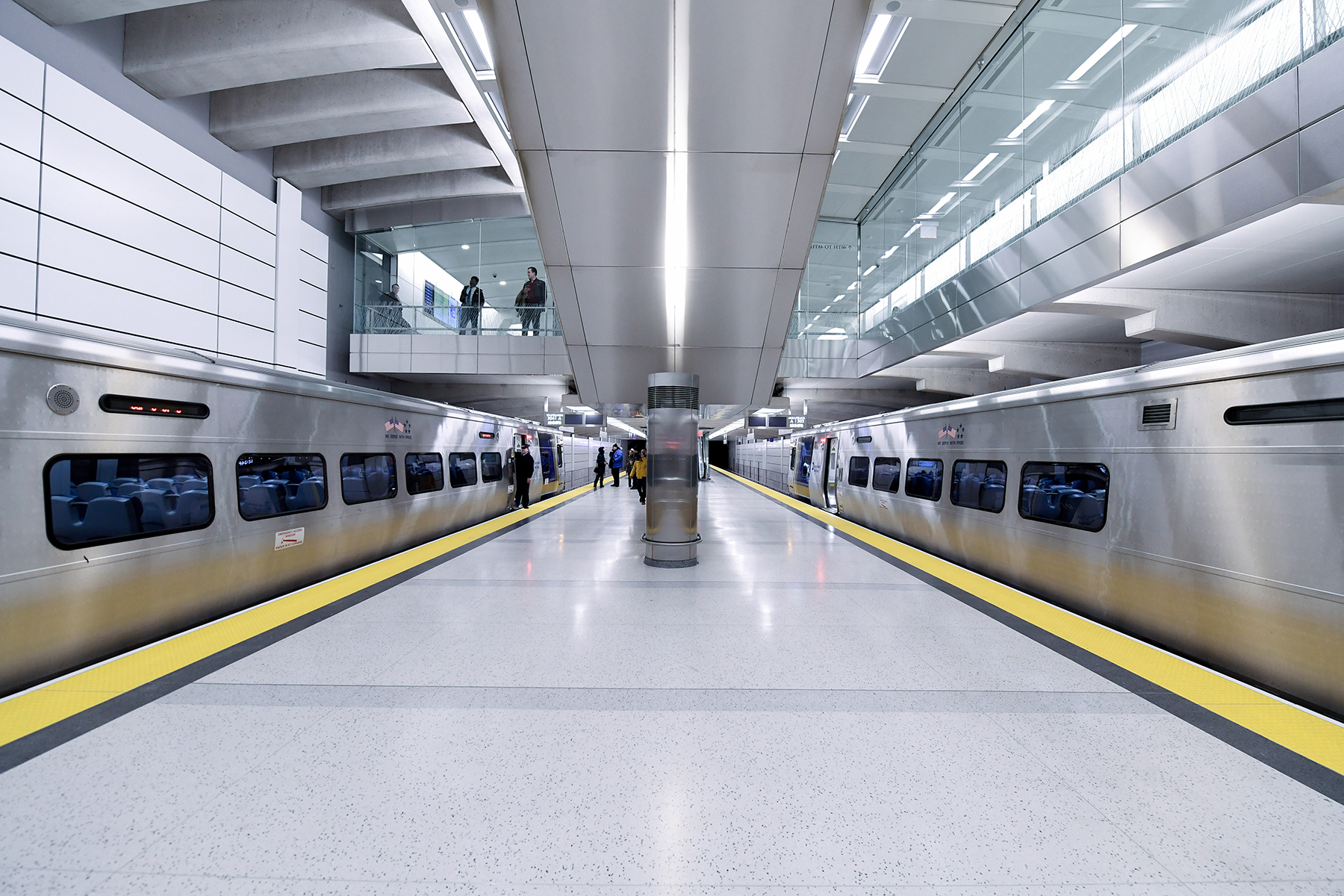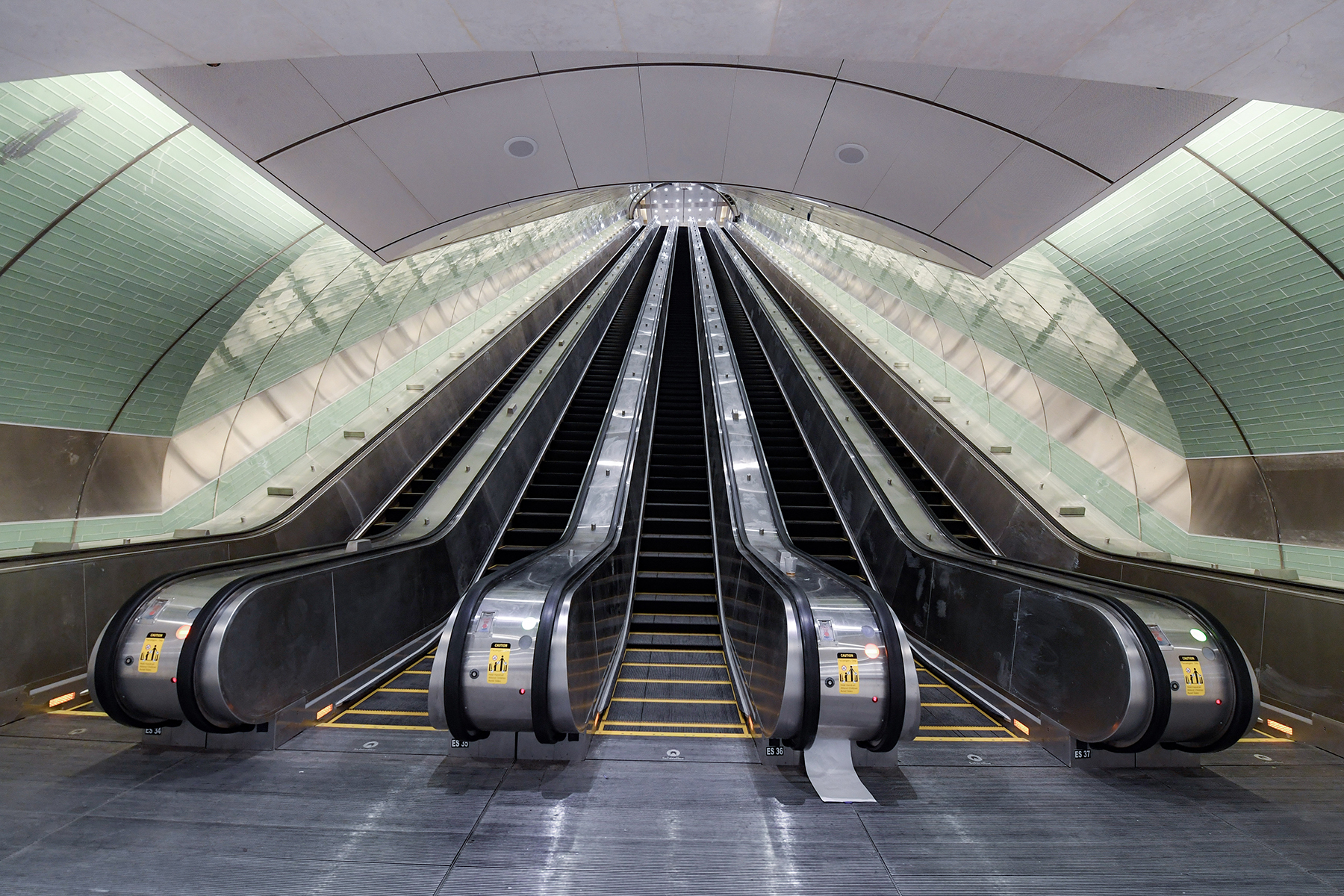By Jay Landers
After more than two decades of construction, the Grand Central Madison station in New York City opened in late January, enabling the Long Island Rail Road to transport passengers from Long Island and the New York City borough of Queens to the east side of the borough of Manhattan for the first time. Formerly known as East Side Access, the massive $11.2 billion effort is the largest single construction project ever conducted by the Metropolitan Transportation Authority, the agency that operates the LIRR and oversees the sprawling transit system across the New York metropolitan area.

‘Breathtaking’ achievement
Beneath the city’s historic Grand Central Terminal, the more than 700,000 sq ft Grand Central Madison extends in a north-south direction along Madison Avenue between 43rd and 48th Streets.
Comprising a 350,000 sq ft concourse, a mezzanine level, and upper and lower platform levels, Grand Central Madison also includes eight tracks and four platforms, the lowest section of which is roughly 150 ft below street level. The new station also links to Grand Central Terminal to enable connections to the New York City Subway and the MTA’s Metro-North Railroad.

The project included the construction of two new train tunnels between Manhattan and Queens to link the new station to the existing LIRR system. Other project components included 13 new ventilation facilities and major improvements to one of the busiest railroad junctions in the nation, the Harold Interlocking in Queens.
"What we are opening today is truly breathtaking,” said MTA chair and CEO Janno Lieber in a news release issued on Jan. 25, the first day that service began on the new line.
“The eight tracks, four platforms, and 714,000 sq ft of space at Grand Central Madison are only the most visible part of a project that also includes 40 mi of new track; 96 new switches; 550 mi of cables; 8,445 ft of retaining walls; five new railroad bridges; 296 new catenary poles; 51 signal towers; 2 million cu yd of rock, soil, and muck excavated; 1 million cu yd of concrete poured; and tunnel ventilation plants with emergency exits every few blocks,” Lieber said.
Big boost in service
Before the opening of Grand Central Madison, the LIRR’s only stop in Manhattan was at Penn Station, on the west side of the borough. “For LIRR customers who work on the east side of Manhattan, this new terminal is expected to save 40 minutes a day of commute time round trip,” according to the MTA release.
The LIRR began full service to Grand Central Madison on Feb. 27. In doing so, the railroad increased its weekday service levels by more than 40%. “This is the biggest service increase in LIRR history,” said Catherine Rinaldi, interim president of the LIRR and president of Metro-North Railroad in a Feb. 8 news release.

Because approximately 45% of commuters on the LIRR are expected to go to Grand Central Madison, the opening of the new terminal will reduce congestion at Penn Station. This will help facilitate the MTA’s plans to replace Penn Station with a larger, more modern facility.
More broadly, the improvements to the critical Harold Interlocking rail junction, which serves Amtrak and the LIRR, are expected to improve travel times along the Northeast Corridor. Previously, Amtrak’s Northeast Corridor service had to cross over mainline tracks in the Harold Interlocking, necessitating careful coordination with local trains. Among the improvements to the interlocking were the addition of two bypass tunnels to enable Amtrak trains to pass through the junction with no conflicts — or fewer conflicts — depending on the direction they are traveling. In either case, the reduction in conflicts will lead to a decrease in service delays.
Designing and constructing the improvements amid active railways and without affecting their operations was no small feat, says Joseph Marie, a senior vice president for STV, one of the three consulting firms, along with Parsons Brinckerhoff (now WSP) and the Parsons Corp., that comprise the General Engineering Consultant joint venture responsible for all aspects of engineering on the project. “One of the biggest challenges from a civil perspective was sequencing the work,” Marie says. This was to preserve the continuity of operations and service.
Tunnel technicalities
For the crossing under the East River, the project was able to take advantage of the unused lower level of the existing 63rd Street Tunnel. Originally constructed in the 1970s, the tunnel was not put into service until 1989, when its upper level began to be used by the New York City Subway.
Four new tunnels were constructed in Queens to connect the LIRR to the 63rd Street Tunnel. To this end, two 22 ft diameter pressurized-face tunnel boring machines were used along much of the alignment. “These tunnels pushed the limits of soft-ground TBM operation to minimize the need for cut-and-cover construction in the Harold Interlocking,” Marie says.
The westernmost section of the tunneling in Queens included a highly complicated segment that passes beneath Northern Boulevard — a major truck route — and a city subway line.
To support the weight of these structures during tunnel construction, the ground beneath them was stabilized by means of ground freezing. This was achieved by inserting piping into the ground and introducing a frozen brine solution. Tunneling through the frozen ground then was conducted by means of the sequential excavation method. “From a civil engineering standpoint, that was probably one of the biggest challenges,” Marie says.
Having a blast
On the Manhattan side of the project, two hard rock TBMs were used for tunnel construction, while drill-and-blast methods were used to construct two 60 ft long, 80 ft wide, and nearly 1,150 ft long caverns as well as cross passages, shafts, and ventilation structures. Some of this blasting occurred beneath Grand Central Terminal and other existing structures.
By contrast, the passenger area “was created from extensive reconstruction of Grand Central Terminal’s western lower-level track area, where existing structural elements were reframed to create space for the high-rise escalators,” Marie says.

Although working deep underground in Manhattan conferred such advantages as not having to contend with traffic and worry about affecting businesses, the design team had to ensure that construction did not impair any foundations of the many buildings above the project. In this regard, the challenge “was really making sure that we were mindful in protecting the existing structures, the existing footers, and the existing shear walls of the large buildings that were above us,” Marie says.
Therefore, an “extensive structural and geotechnical instrumentation program was implemented to monitor in real time ground settlements and vibration levels near and under buildings and railroad facilities,” says Jesus Schabib, P.E., a senior vice president for WSP and a senior adviser and the former chief engineer for the General Engineering Consultant joint venture.
“Vibration threshold limits of 0.5 in./second were established to protect the existing Grand Central Terminal and other vibration-sensitive structures and equipment,” Schabib says.
With its complexity, large scale, and myriad obstacles to be overcome, the Grand Central Madison project has been easily “the most challenging and complicated” of Marie’s 37-year career in transit, he says. But it has also been one of the most critical from the standpoint of benefiting society at large.
“At the end of the day, this is going to be viewed as a highly transformative project for the entire region,” Marie says.
This article first appeared in Civil Engineering Online.



